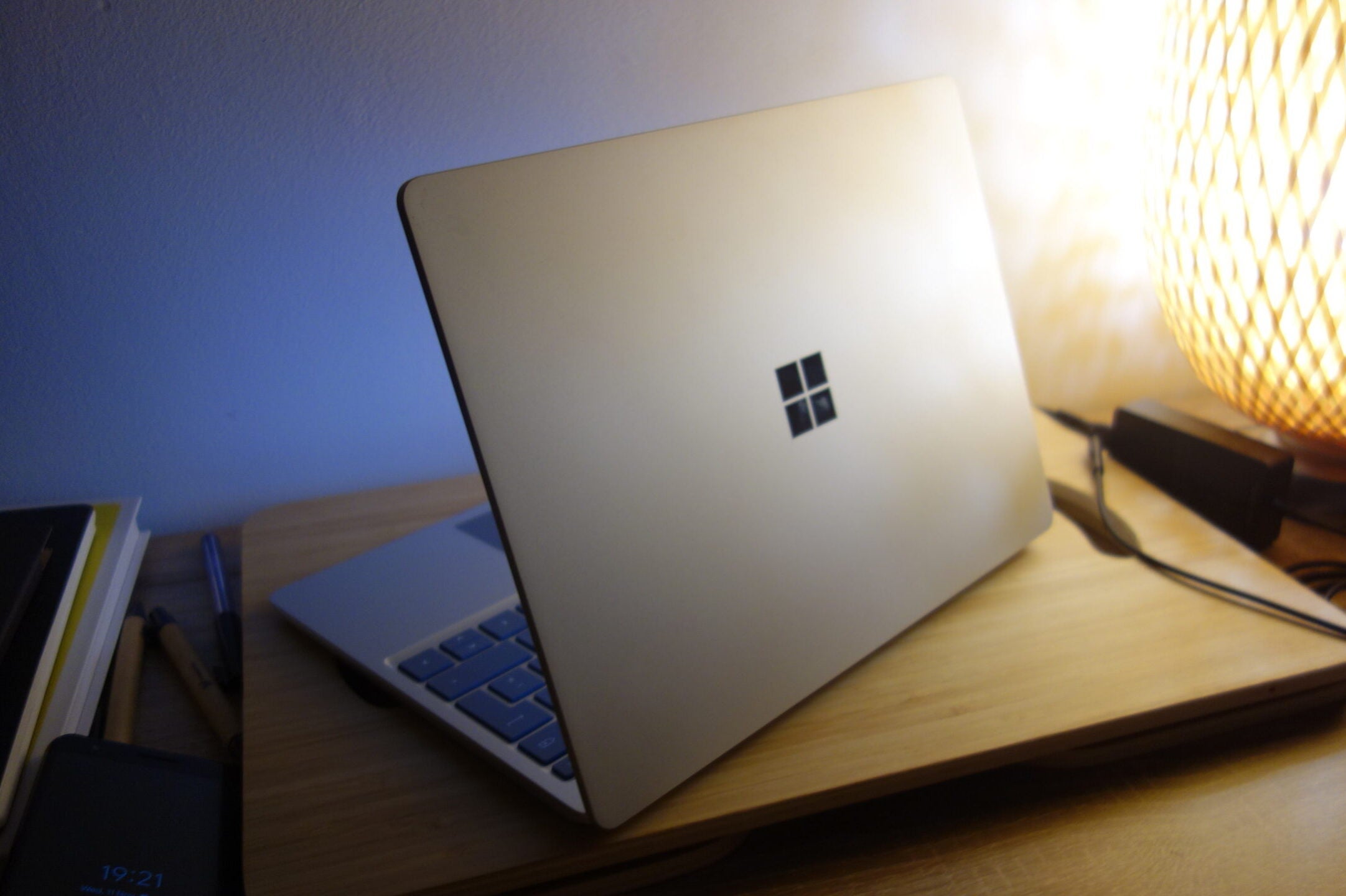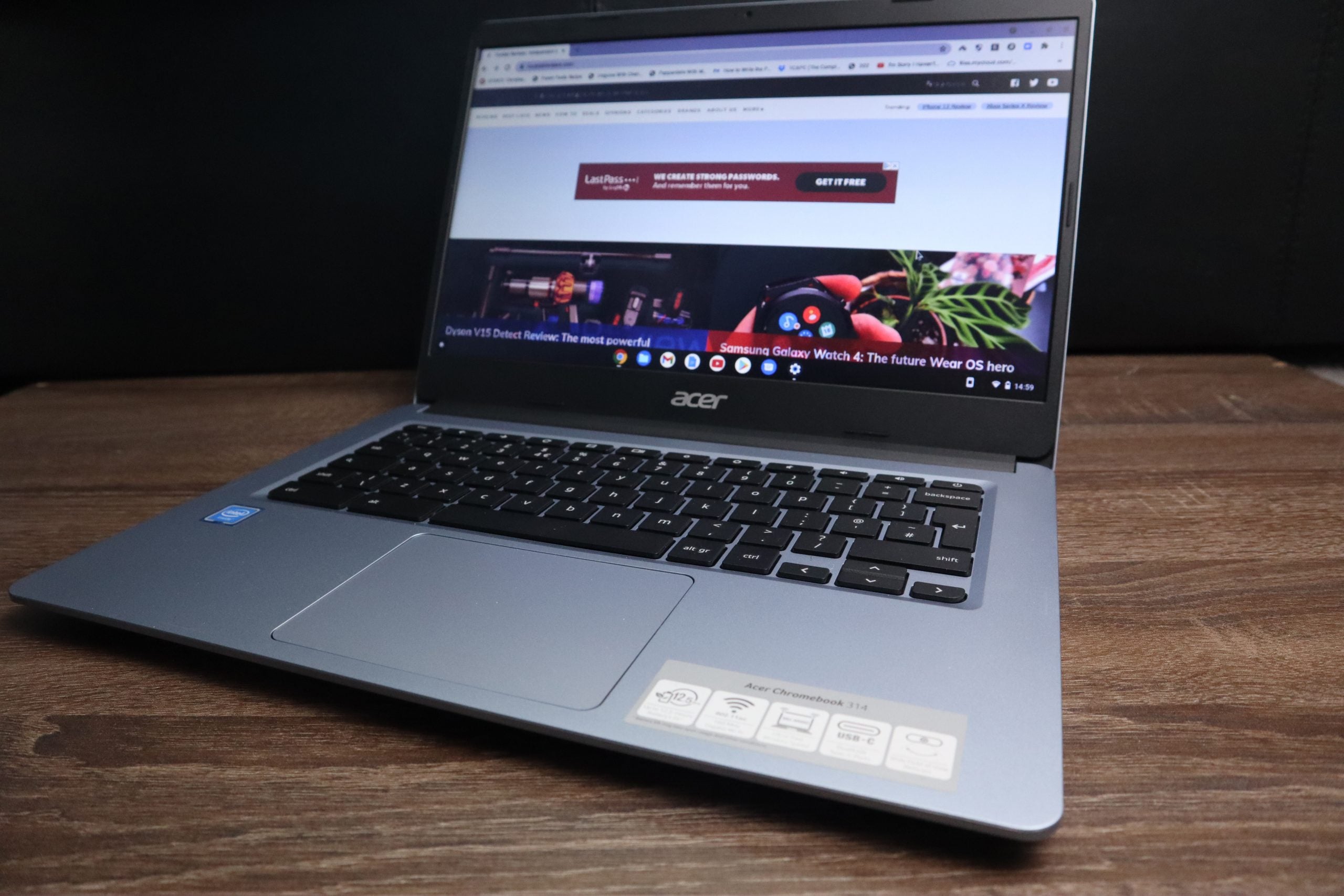Lenovo Chromebook Duet Review
An incredibly affordable Chromebook that's ideal for school students

Verdict
The Lenovo Chromebook Duet is an astonishingly good value device, coming bundled with a detachable keyboard in order to undercut the price of the iPad and Surface Go 2 by a couple hundred quid. With a lovely Full HD screen, stylish ultra-portable design and ultra-long battery life, this is an fantastic buy for bargain hunters and school students.
Pros
- Very affordable price
- Bundled keyboard offers versatility
- Superb screen for video content
- Excellent battery life
Cons
- Lack of headphone jack
- Poor speaker quality
- Keyboard is uncomfortably small
Key Specifications
- Review price: £299.99
- Processor: MediaTek Helio P60T Octa-Core
- RAM: 8GB
- Storage: 128GB
- Dimensions: 240 x 160 x 7.35 mm
- Weight: 450g
The Lenovo Chromebook Duet is an astonishingly good value device, doubling up as both a tablet and laptop when equipped with the bundled keyboard.
Such a concept isn’t unique, with Microsoft’s Surface Go 2 and Apple’s iPad tablets also featuring keyboard support. But with Lenovo bundling in the keyboard for a total price of just £299.99, the Chromebook Duet is one of the most affordable options on the market.
There are limitations here of course, with the integrated processor only powerful enough for basic users. But if you’re a student, office worker or casual web browser, the Lenovo Chromebook Duet may prove a bargain.
Design
- The Duet is essentially a tablet with a detachable keyboard
- Weighing just 450g, the Duet is extremely portable
- Lack of headphone jack is a disappointing omission
Lenovo may insist on calling the Duet a “2-in-1 Chromebook”, but it actually feels more like a ChromeOS-powered tablet that can also be turned into a makeshift laptop with the bundled keyboard. This gives the device oodles of versatility, whether you want to hammer out essays or hold in your hands when watching. Buy the sold-separately stylus, and you can even scribble and doodle.
The plastic keyboard magnetically clips to the underside of the tablet, while a separate cover can be slapped onto the back, featuring a built-in stand for propping up the device. It’s a shame the stand isn’t built into the device itself like with the Surface Go, although the cover’s flip-out prop works fine enough, at least on hard surfaces such as desks.
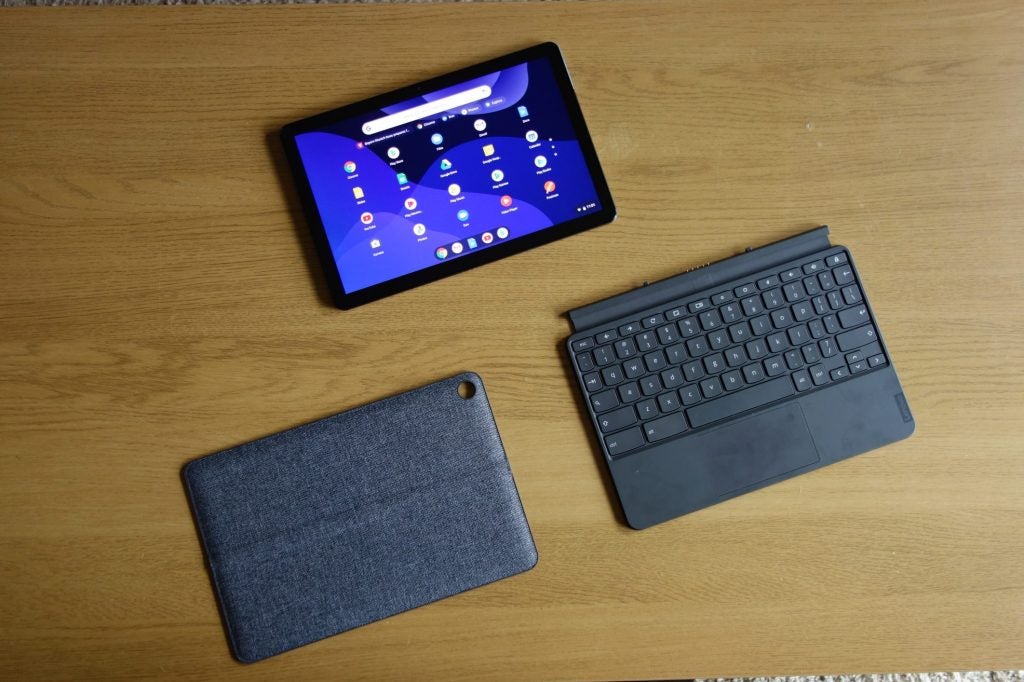
The Duet is so thin and light that I can pick it up with two fingers without strain. The 10-inch screen is fairly small, but that makes it very easy to slip into a small bag and for little children to pick it up with ease.
The word ‘Chromebook’ arguably has tacky connotations, but such devices have come of age in 2020 and the Duet is a prime example. A metal rear and under-glass bezel ensure it looks just as classy as any other Android tablet that springs to mind. The attachable fabric cover looks rather lovely too, with a little hole in the top-right corner for the tablet’s camera to pop into.
Speaking of the cameras, you get an 8MP sensor on the rear and a 2MP one on the back. The capture quality is arguably a little better than what you’d find with a laptop, but your smartphone will almost definitely have a better camera. Still, the Chromebook Duet proves to be a great device for video calls, with Google’s Duo app coming preinstalled.
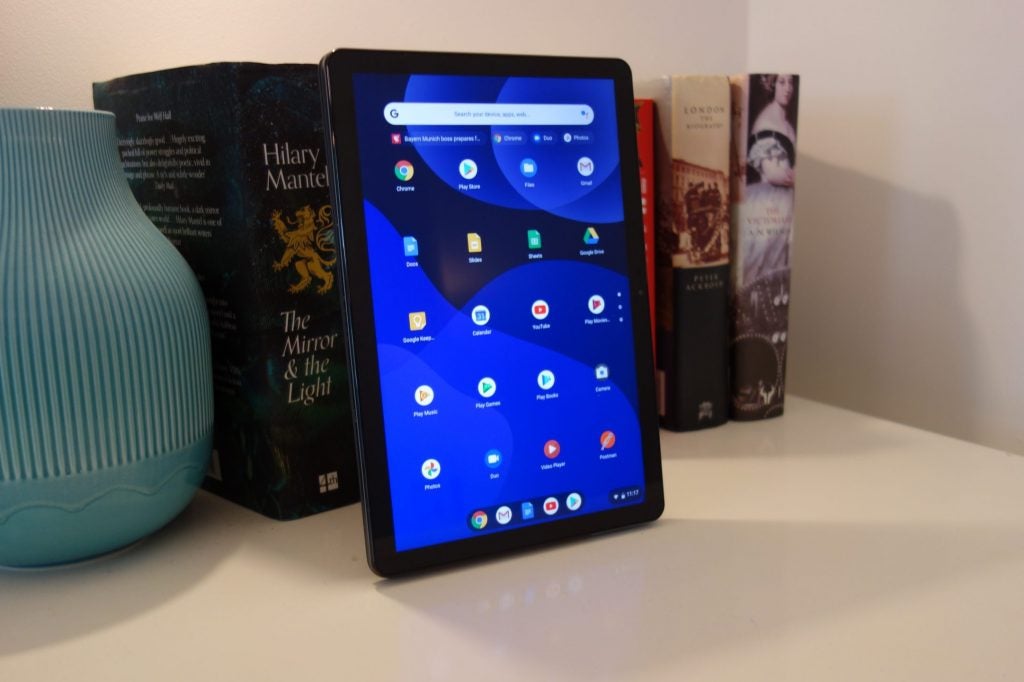
Chromebooks at this price often look and feel criminally cheap, while tablets such as the iPad and Surface Go neglect to include the keyboard in the box. Yet Lenovo’s Duet looks fantastic, bundling in both a cover and keyboard at the base price. There’s no stylus included, but they can be bought separately at a reasonable price.
There are only power and volume physical buttons on the tablet, but there isn’t really any need for anything more. I’m disappointed by the lack of ports, as there’s only an input for USB-C (Gen 2). That means there’s no USB-A, SD Card slot or even a headphone jack. Lenovo does at least provide a USB-C adaptor for the latter, but it’s still a fuss having to plug it in every time you want to use headphones.
This is made worse by the tinny speaker quality. That USB-C port is also the only provided input for charging, so you can’t listen to music with wired headphones and charge the device simultaneously. Bluetooth at least allows support for your wireless peripherals.
Keyboard
- Type Cover bundled in at no extra charge
- Keyboard snaps magnetically to the Duet
- Type Cover feels fine, but is no laptop keyboard replacement
The Lenovo Chromebook Duet is one of the few ‘2-in-1 tablets’ I’ve reviewed that bundles the keyboard accessory in the box. I’ve been crying out for Microsoft to do the same for years with the Surface range, so Lenovo really needs to be applauded for finally bucking the stingy trend.
The keyboard is a pretty decent one too, with the keys having surprisingly good travel and the keyboard itself remaining sturdy when I hammered against it. It’s very easy to clip to the underside of the tablet, and springs into action almost immediately. I have noticed the odd technical hiccup where the mouse indicator failed to show up, but reconnecting the keyboard always fixed the issue.
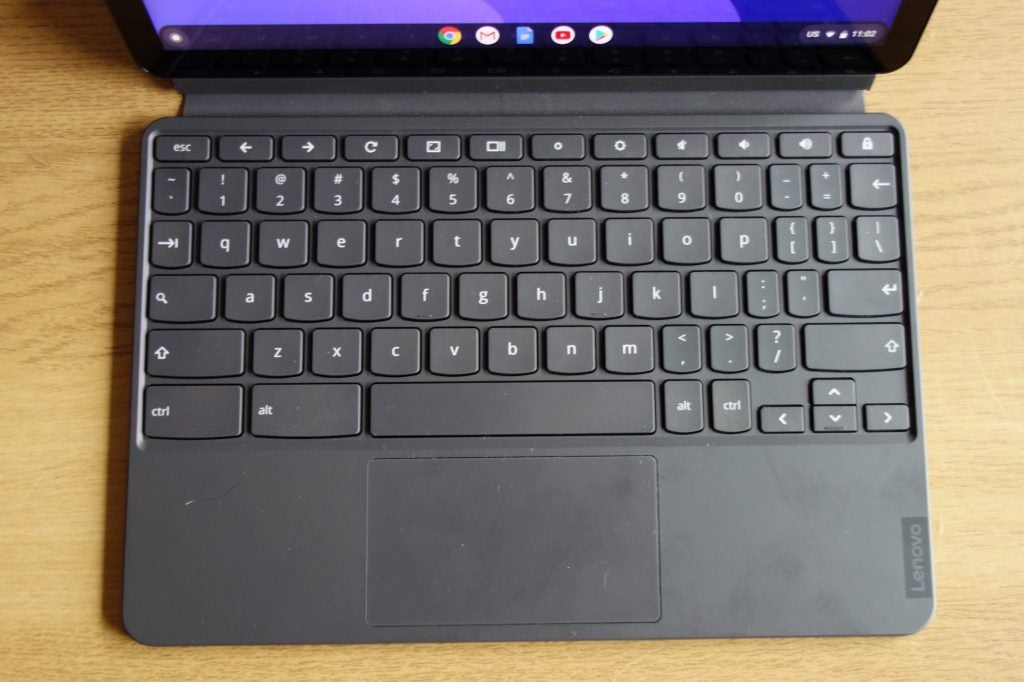
I do have a couple of hangs ups, particularly the tiny keys that will likely give touch typists migraines. The keyboard has no incline like the Surface Go 2 type cover either, instead lying flat against your desk which feels a touch awkward – although that’s no different to the iPad.
The Duet’s keyboard is nowhere near the standard of a proper laptop one, and so may not be up for the challenge of a plus 10,000 word essay. But for note takers, casual browsers and school students, it will be comfortably adequate enough.
The trackpad is top-notch too, and is far more responsive than those found on similarly priced Chromebooks. It is a tad on the small side, but that’s understandable since the Duet only has a 10.1-inch screen.
Display
The Lenovo Chromebook Duet has a fabulous 10.1-inch touchscreen, with the Full HD resolution ensuring a sharp picture and the IPS panel featuring punchy colours.
I was surprised how good the likes of The Witcher look on the small tablet, and I’m sure it would make a great companion for long-haul flights and midnight movie marathons in bed.
It does admittedly struggle in dark scenes, with shadowy corridors and gloomy battlefields lacking the detail the director intended. The high brightness at least drags the contrast up to suitable levels, while also making it possible to use in bright environments without being forced to squint.

The colour accuracy is impressive, hitting 93.9% for the sRGB gamut coverage. This means it can accurately present the majority of images and video to a high non-professional standard. Colour-rich shows such as BoJack Horseman and Rick and Morty look superb.
Chromebooks at this price usually suffer poor display quality, so to see the Lenovo Chromebook Duet nail the majority of the basics is quite remarkable. The poor performance in dark scenes may be annoying for those who like to binge gritty superhero shows, but it’s hard to fault too much at this price.
Performance
- Fast enough for basic web browsing
- ChromeOS is more user-friendly than Windows
- 64GB storage is rather stingy
There has to be a major chink in the armour somewhere right? And that for the Lenovo Chromebook Duet, that’s arguably the performance. With a MediaTek Helio P60T Octa-Core processor and 4GB RAM, the Duet is less powerful than the majority of Chromebooks and laptops on the market.
Our Geekbench 5 results (as seen below) showed the Duet to lag behind the likes of the Surface Go 2. However, in practice, the Duet felt fairly nippy. Opening new browser windows with multiple tabs already open would often result in slowdown, but it was never sluggish enough to prove bothersome.
I never had issues with the likes of Netflix and Spotify, proving that the Duet bosses basic tasks without a hitch. This is largely thanks to the streamlined Chrome operating system, and while this does restrict you to the Google Play app store, it has plenty enough applications for your average user.
| Lenovo Chromebook Duet | Microsoft Surface Go 2 | |
| Geekbench 5 single-core | 263 | 427 |
| Geekbench 5 multi-core | 915 | 970 |
ChromeOS is significantly easier to navigate than Windows, making it a good option for children and grandparents. Google has also added in some software tweaks for the tablet mode, so flicking up the screen brings up the app menu. Such gestures make the Duet immediately more touchscreen friendly than the likes of the Surface Go 2, although Apple’s iPad remains the king in this department.
The Duet’s low benchmark scores do however rule out professional-grade content creation, but the Chromebook was never intended for such use, especially at its budget price. And while this device is certainly not cut out for high-end gaming, the likes of Google Stadia and GeForce Now allow you to stream the likes of Tomb Raider and The Witcher 3 to the tablet. I hooked up an Xbox controller via Bluetooth and had a blast playing Control, although you do need a pretty good internet connection for a stable performance.
Storage is admittedly tight for the Duet, with the base model only featuring 64GB space capacity and the slightly more expensive model maxing out at 128GB. I don’t personally think that’s a major issue, especially since ChromeOS encourages you to use cloud-based software such as Google Drive, but it’s worth bearing in mind if you planned on cramming it with photos, videos and apps.
Battery
- Battery lasted 13 hours after looping YouTube videos
- Better battery life than iPad and Surface Go 2
- Attaching keyboard dramatically reduces battery life
The Lenovo Chromebook Duet may not be as good as the Surface Go 2 and iPad when it comes to performance power, but it trumped both of them in terms of battery life. After turning the brightness down to 50% and looping a YouTube video until the juice tank was completely drained, I was able to squeeze an impressive 13 hours out of Lenovo’s Chromebook.
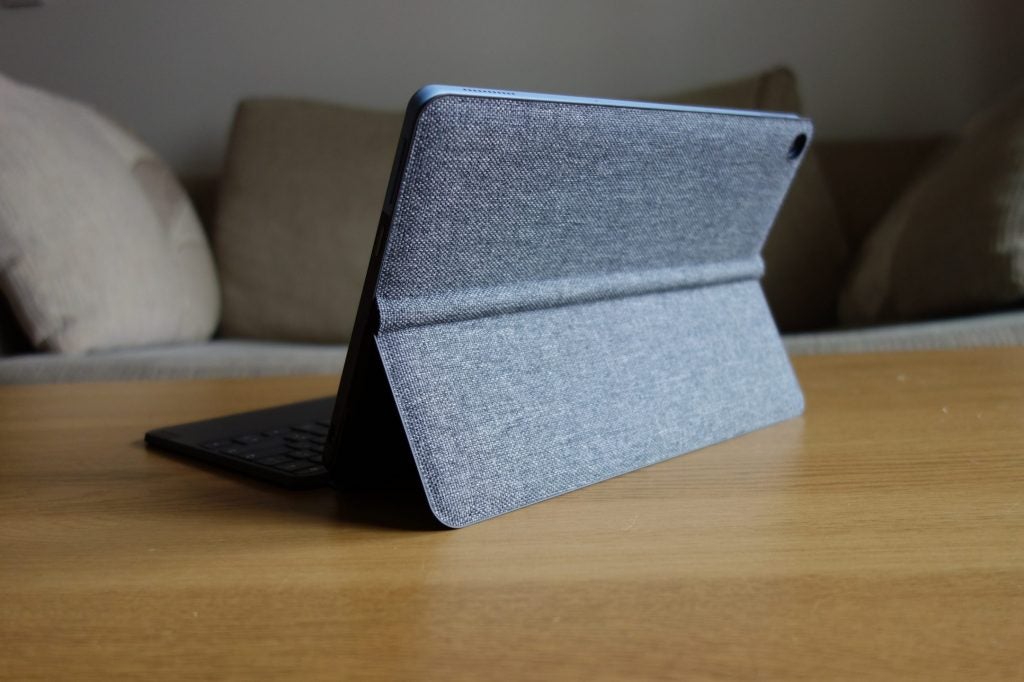
For comparison, the Surface Go 2 lasted just over 9 hours in the same test, while the iPad 7 could only manage 10 hours. Sure, those rival tablets are more powerful, but you don’t really need high levels of performance for basic tasks such as web browsing and video streaming.
Attaching the keyboard will dramatically reduce the battery life, but the Chromebook should still plough through the majority of a workday without requiring a recharge.
You should buy if…
- You want a web-browsing device at a bargain price
The Lenovo Chromebook Duet is incredibly affordable with a £299.99 starting price, as it’s perfect for web browsing thanks to the tablet form factor.
- You’re a student who just needs to jot down notes
The bundled keyboard makes this 2-in-1 device very versatile, especially for jotting down notes on Google Drive or writing up emails.
- You want an on-the-go video player
The Duet has a Full HD display and can keep on chugging for 13 hours of video playback before requiring a recharge. This makes it a very good companion for watching Netflix on the road.
You shouldn’t buy if…
- You’ll be doing a lot of typing
The bundled type cover is perfectly adequate for short bursts of typing, but it’s not ideal if you’re going to be writing long essays/reports for work or university. I suggest you opt for a more conventional laptop if you need to churn out copy.
- You don’t own Bluetooth headphones
The Duet disappointingly lacks a jack, which means you’ll need to either used the bundled adaptor or invest in some Bluetooth-supporting headphones to listen to Spotify/video in private.
- You’re not a fan of ChromeOS
The Duet is powered by ChromeOS, which makes it feel like a Chromebook tablet. ChromeOS is pretty great, but is relatively restrictive compared to rival software. The iPad and Surface Laptop Go are decent alternatives if you want to move to iPadOS or Windows instead.
FAQs
The Lenovo Chromebook Duet is at its best when used as a tablet, whether you’re browsing the web, streaming video or scrolling through social media. It can also be used to type out essays with the bundled type cover, but a more conventional clamshell laptop is better for such tasks.
The Lenovo Chromebook Duet first launched in May 2020.
Specifications
Trusted Reviews’ Benchmarks
Jargon buster
ChromeOS
The operating system used by Chromebooks, which shares similarities to the Android software found on smartphones. It’s largely app based, but not quite as flexible as Windows.
Google Stadia/GeForce Now
Cloud-streaming platforms that allow you to play purchased games through an online server rather than depending on hardware for a stable performance.

